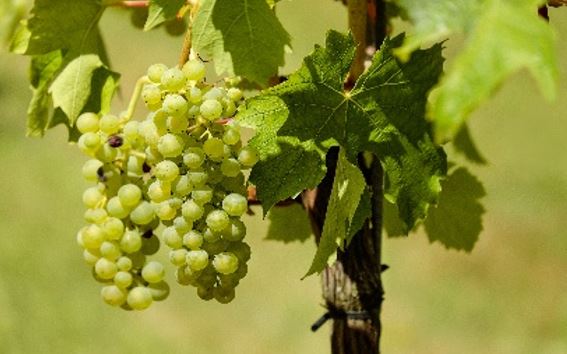A Review on “Sarva Madahar Leha Yoga” An Ayurvedic Formulation in Madatyaya (Alcoholism)
DOI:
https://doi.org/10.21760/jaims.10.6.42Keywords:
Sarva Madahara Leha Yoga, Madatyaya, Alcoholism, Kapittha, Dadima, DrakshaAbstract
Madatyaya is characterized by excessive alcohol consumption, symptoms include, thirst, confusion, headache, numbness and disturbed mortar coordination. Alcohol abuse or excessive alcoholism known as Madatyaya in Ayurveda, it not only harms the health of individual but also impacts social and economic wellbeing of family. Madatyaya is categorized as a lifestyle disorder or addictive disorder, its prevalence increases globally due to the modern pattern of life style. Madatyaya affects Hridaya, Rasavaha srotas, Manovaha srotas and Oja, etc. Ayurvedic treatment approach for managing Madatyaya. The treatment involves a combination of physical, mental, and spiritual therapies to help individuals overcome addiction and achieve overall well-being. Objective: The objective is to explore the pharmacological properties of the individual components of Sarva Madahar Leha Yoga and evaluate their collective impact on Madatyaya. Method: Various databases, including Google Scholar, PubMed and Ayurvedic journals, were searched using relevant keywords. Studies reporting on the antimicrobial activity, hepatoprotective activity, antifungal activity, and immunomodulatory activity of the individual components of Sarva Madahar Leha Yoga were included. Ayurvedic Samhita and Nighantu with commentaries are used for relevant content. Data were synthesized to elucidate the potential mechanisms of action and therapeutic efficacy of Sarva Madahar Leha Yoga in managing Madatyaya.
Downloads
References
Bellah SF, Raju MIH, Billah SMS, Rahman SE, Murshid GMM, Rahman MM. Evaluation of antibacterial and antidiarrheal activity of ethanolic extract of Feronia limonia leaves. Pharma Innov J. 2015;3(11):50–54.
Jain M, Kapadia R, Jadeja RN, Thounaojam MC, Devkar RV, Mishra SH. Protective role of standardized Feronia limonia stem bark methanolic extract against carbon tetrachloride induced hepatotoxicity. Anal Hepatol. 2012;11(6):935–43.
Pokale S, Kushwaha R. A review on antidiarrheal activity of herbals. Int J Res Pharm Biomed Sci. 2011;2:1357–62.
Senthilkumar KL, Kumawat BK, Rajkumar M, Senthilkumar. Antidiarrheal activity of bark extracts of Limonia acidissima Linn. Res J Pharm Bio Chem Sci. 2010;1:550–3.
Jayashree VH, Londonkar R. Comparative phytochemical studies and antimicrobial potential of fruit extracts of Feronia limonia Linn. Int J Pharm Pharm Sci. 2014;6.
Singhal KC. Antihelmintic activity of Punica granatum and Artemisia sieversiana against experimental infections in mice. Indian J Pharmacol. 1984;15(2):119–22.
Jafri MA, Aslam K, Javed K, Singh S. Effect of Punica granatum Linn flowers on blood glucose level in normal and alloxan induced diabetic rats. J Ethnopharmacol. 2000;70(3):309–14.
Dhavan B, Patnaik K, Rastogi RP, Singh KK, Tandon JS. Screening of Indian plants for biological activity. Indian J Exp Biol. 1977;15.
Park HJ, Jung UJ, Lee MK, Cho SJ, Jung HK, Hong JH, et al. Modulation of lipid metabolism by polyphenol-rich grape skin extract improves liver steatosis and adiposity in high-fat-fed mice. Mol Nutr Food Res. 2013;57:360–4. doi:10.1002/mnfr.201200447.
Dogan A, Celik I. Hepatoprotective and antioxidant activities of grapeseeds against ethanol-induced oxidative stress in rats. Br J Nutr. 2012;107:45–51. doi:10.1017/S0007114511002650.
Almajwal MA, Elsadek MF. Lipid-lowering and hepatoprotective effects of Vitis vinifera dried seeds on paracetamol-induced hepatotoxicity in rats. Nutr Res Pract. 2015;9:37–42. doi:10.4162/nrp.2015.9.1.37.
da Costa GF, Ognibene DT, da Costa CA, Teixeira MT, Cordeiro VdSC, de Bem GF, et al. Vitis vinifera L. grape skin extract prevents development of hypertension and altered lipid profile in spontaneously hypertensive rats: Role of oxidative stress. Prev Nutr Food Sci. 2020;25:25. doi:10.3746/pnf.2020.25.1.25.
Godse S, Mohan M, Kasture V, Kasture S. Effect of myricetin on blood pressure and metabolic alterations in fructose hypertensive rats. Pharm Biol. 2010;48:494–8. doi:10.3109/13880200903188526.
Borde P, Mohan M, Kasture S. Effect of myricetin on deoxycorticosterone acetate (DOCA)-salt-hypertensive rats. Nat Prod Res. 2011;25:1549–59. doi:10.1080/14786410903335190.
Sei-ichi K, Toda K, Matsumoto K, Ishihara C, Nonobe S, Matsunaga C, et al. Isolation and characterization of a novel oligomeric proanthocyanidin with significant anticancer activities from grape stems (Vitis vinifera). Sci Rep. 2019;9:12046. doi:10.1038/s41598-019-48603-5.
Cronin H, Draelos ZD. Top 10 botanical ingredients in 2010 anti-aging creams. J Cosmet Dermatol. 2010;9:218–25. doi:10.1111/j.1473-2165.2010.00516.x.
Sharif A, Akhtar N, Khan MS, Menaa A, Menaa B, Khan BA, et al. Formulation and evaluation on human skin of a water-in-oil emulsion containing Muscat hamburg black grape seed extract. Int J Cosmet Sci. 2015;37:253–8. doi:10.1111/ics.12184.
Houillé B, Papon N, Boudesocque L, Bourdeaud E, Besseau S, Courdavault V, et al. Antifungal activity of resveratrol derivatives against Candida species. J Nat Prod. 2014;77:1658–62. doi:10.1021/np5002576.















